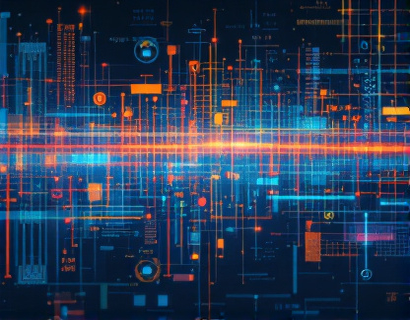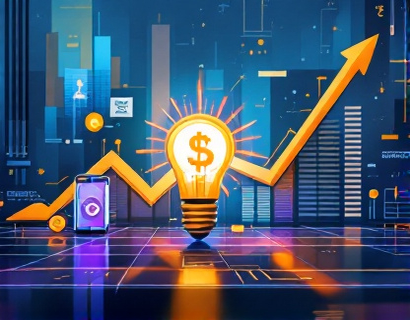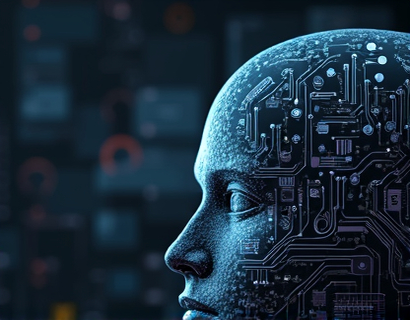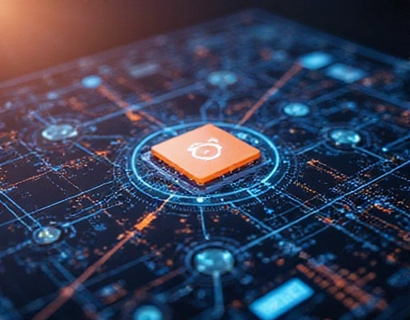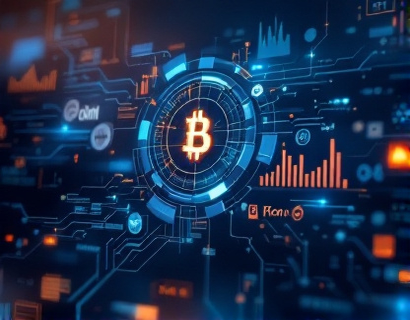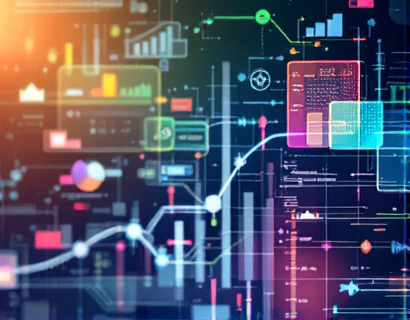Revolutionizing Cross-Blockchain Asset Conversion: The Power of Decentralized dApps
The blockchain ecosystem has witnessed significant advancements in recent years, with decentralized applications (dApps) emerging as a transformative force. One of the most compelling developments in this space is the creation of a decentralized dApp designed to streamline the conversion of digital assets across multiple blockchains. This innovative solution addresses a critical pain point for blockchain professionals and digital asset managers, offering unparalleled compatibility and efficiency in managing assets across diverse blockchain environments.
The traditional process of converting digital assets between blockchains has been fraught with challenges. Centralized exchanges and platforms often impose limitations, high fees, and security risks. These centralized entities control the conversion process, which can lead to bottlenecks, censorship, and dependency on a single point of failure. The introduction of a decentralized dApp changes this paradigm by removing intermediaries and providing a trustless, user-controlled environment for asset conversion.
Understanding the Need for Cross-Blockchain Asset Conversion
The blockchain landscape is characterized by a multitude of platforms, each with its own set of features, consensus mechanisms, and token standards. This diversity is a strength, fostering innovation and catering to various use cases. However, it also creates fragmentation, making it challenging for users to seamlessly move assets between different blockchains. The need for a robust, decentralized solution that can handle cross-blockchain conversions efficiently and securely has become increasingly apparent.
For blockchain professionals and digital asset managers, the ability to convert assets between blockchains is crucial. It enables them to leverage the strengths of different platforms, optimize asset utilization, and maintain a diversified portfolio. The process, however, has been cumbersome and often requires manual intervention, increasing the risk of errors and delays. A decentralized dApp addresses these issues by automating the conversion process, ensuring smooth and secure asset transfer across various blockchains.
How the Decentralized dApp Works
The decentralized dApp operates on a network of nodes, each running the application's code and maintaining a copy of the conversion logic. This decentralized architecture ensures that no single entity has control over the entire system, enhancing security and resilience. Here’s a high-level overview of how the conversion process works:
- Asset Selection: Users initiate the conversion process by selecting the digital assets they wish to convert and specifying the target blockchain.
- Smart Contract Interaction: The dApp interacts with smart contracts deployed on the source and target blockchains. These contracts handle the conversion logic, ensuring that the assets are accurately and securely transferred.
- Trustless Conversion: The conversion process is executed on the blockchain itself, eliminating the need for trust in a central authority. Transactions are verified by the network, and once confirmed, the assets are transferred to the user's wallet on the target blockchain.
- Transaction Completion: Users receive a confirmation of the successful conversion, with the assets now available on the target blockchain. The entire process is transparent, with all transactions recorded on the blockchain for auditability.
The use of smart contracts is a cornerstone of this decentralized approach. Smart contracts ensure that the conversion process is automated, consistent, and free from human error. They also provide a level of transparency, as the code is open for review, allowing users to understand exactly how their assets are being converted.
Benefits of Using a Decentralized dApp for Cross-Blockchain Conversion
The advantages of using a decentralized dApp for cross-blockchain asset conversion are numerous and significant:
Enhanced Security
By removing central points of control, the decentralized dApp minimizes the risk of security breaches and hacking. The distributed nature of the network ensures that even if some nodes are compromised, the overall system remains secure. Users have full control over their assets and can verify the conversion process through the blockchain's transparency.
Reduced Costs
Centralized exchanges often charge high fees for conversion services, which can eat into the value of digital assets. A decentralized dApp eliminates these intermediaries, reducing or even eliminating conversion fees. This cost efficiency is particularly beneficial for users who frequently convert assets between blockchains.
Increased Efficiency
The automation of the conversion process through smart contracts significantly speeds up the transfer of assets. Users can initiate conversions at any time, and the process is completed almost instantaneously once the blockchain transactions are confirmed. This efficiency is a game-changer for blockchain professionals who need to manage assets across multiple platforms quickly and reliably.
Greater Flexibility
The decentralized dApp supports a wide range of blockchains and token standards, providing users with the flexibility to convert assets between virtually any blockchain. This universality ensures that users are not tied to specific platforms or ecosystems, allowing them to take full advantage of the blockchain's potential.
User Empowerment
With a decentralized dApp, users regain control over their assets and the conversion process. They are no longer dependent on centralized services, which can impose restrictions or fail to operate during critical times. This empowerment fosters a sense of trust and confidence in the system, encouraging more users to adopt decentralized solutions.
Technical Underpinnings of the Decentralized dApp
To understand the technical foundation of this innovative dApp, it's essential to delve into the key components and technologies that make it function:
Blockchain Interoperability Protocols
Interoperability between different blockchains is achieved through specialized protocols designed to facilitate communication and asset transfer. Protocols like Polkadot's XCMP (Cross-Chain Message Passing) and Cosmos' IBC (Inter-Blockchain Communication) enable seamless interaction between disparate blockchain networks. The dApp leverages these protocols to ensure smooth and secure asset conversion.
Smart Contracts
Smart contracts are self-executing contracts with the terms of the agreement directly written into code. In this dApp, smart contracts are deployed on the source and target blockchains to handle the conversion logic. These contracts are transparent, auditable, and execute precisely as programmed, ensuring reliability and trust.
Decentralized Storage
To maintain the decentralized nature of the application, decentralized storage solutions like IPFS (InterPlanetary File System) are used. IPFS stores data in a distributed manner, ensuring that the conversion instructions and related data are accessible and resilient to censorship or failure.
User Interface and Experience
Despite its complex technical underpinnings, the dApp is designed with a user-friendly interface. Users can easily navigate the conversion process, select assets, and choose target blockchains without needing extensive technical knowledge. The interface provides real-time feedback and status updates, enhancing the overall user experience.
Case Studies and Real-World Applications
To illustrate the practical benefits of this decentralized dApp, consider a few real-world scenarios:
Scenario 1: Cross-Chain Trading
A trader holds assets on Ethereum and wishes to execute a trade on Binance Smart Chain. Using the decentralized dApp, the trader can seamlessly convert Ethereum-based tokens to BSC tokens without leaving their wallet. This process is instantaneous and cost-effective, allowing the trader to capitalize on market opportunities quickly.
Scenario 2: Portfolio Diversification
A digital asset manager wants to diversify a client's portfolio by moving assets from Solana to Tezos. The decentralized dApp enables this transfer with high precision and security, ensuring that the client's assets are accurately converted and available on the new blockchain. This flexibility is invaluable for managing a diversified portfolio across multiple ecosystems.
Scenario 3: Decentralized Finance (DeFi)
In the DeFi space, users often need to move assets between different lending protocols, yield farming platforms, and decentralized exchanges. The decentralized dApp simplifies this process, allowing users to convert assets between various DeFi protocols without the hassle of multiple exchanges or high fees. This streamlined experience enhances user engagement and adoption of DeFi services.
Challenges and Future Developments
While the decentralized dApp offers significant advantages, there are still challenges to address:
Scalability
As the number of users and transactions increases, ensuring the dApp's scalability becomes crucial. Developers are exploring layer 2 solutions and optimizing smart contract code to handle higher volumes of transactions efficiently.
Regulatory Compliance
The decentralized nature of the dApp presents regulatory challenges, as different jurisdictions have varying rules regarding blockchain and digital assets. Engaging with regulatory bodies and ensuring compliance is essential for the widespread adoption of such platforms.
User Education
Educating users about the benefits and functionality of decentralized dApps is vital. Many users are still unfamiliar with blockchain technology, and providing comprehensive documentation and support can help drive adoption.
Looking ahead, the future of cross-blockchain asset conversion is promising. Continued advancements in blockchain technology, increased regulatory clarity, and growing user awareness will further enhance the capabilities and reach of decentralized dApps. The potential for integrating additional features, such as automated portfolio management and real-time market data, will make these platforms even more powerful tools for blockchain professionals and enthusiasts.




